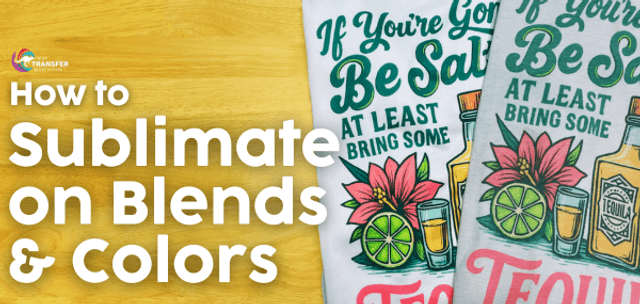If you've heard that dye sublimation only works on white 100% polyester garments—you're not alone. While it’s true that white polyester gives you the most vibrant and durable results, there’s a world of other possibilities out there, including polyester blends, triblends, and even colored shirts.
In this blog, we’ll walk you through how sublimation looks on different types of garments—from bright white 100% polyester to softer blends and triblends—and how factors like fabric content and shirt color impact your final design.
Sublimating on Different Shirt Types
To keep our comparison fair, we used the same sublimation transfer. We recommend pressing your shirts at 375° F - 400° F for 30-90 seconds depending on your press.
Here's how each type performed:
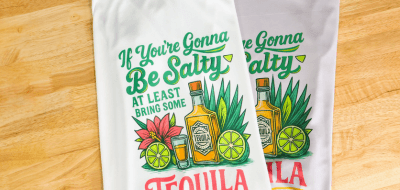
100% Polyester Garments
Best for: Bold, vivid color
Colors tested: White, Silver
Shirt Used: Sport-Tek Posi-Charge Competitor Tee
This is the gold standard for sublimation. The white 100% polyester shirt produced the most vibrant, crisp results—what you'd expect from true sublimation. Colored polyester shirts also turned out well, but the base color of the garment noticeably influenced the final print.
- Lighter colors allow for more vibrancy.
- Darker colors will slightly mute the design.
- Black garments are generally not suitable, as the transfer can barely be seen.
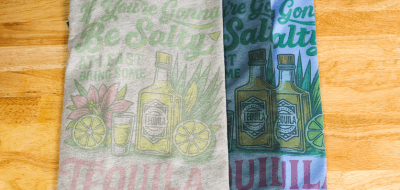
Polyester Blends
Best for: A softer hand feel with a lightly faded finish
Colors tested: Athletic Heather, Heather Navy, Carolina Blue
Shirt Used: BELLA + CANVAS Unisex Heather CVC Short Sleeve Tee
These shirts offer a balance between softness and print quality. Because sublimation ink only bonds with the polyester fibers, the lower polyester content means slightly less vibrant results and a more worn-in look—even right after pressing. The blue shirts were 60/40 blends.
On white blends, designs still look good, just slightly muted. The Athletic Heather was a 90/10 blend, resulting in a very faded result.
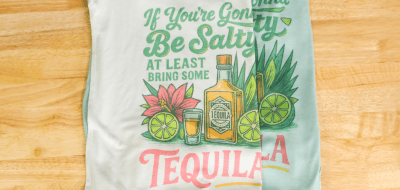
Triblends
Best for: Vintage or distressed designs
Colors tested: Cement Triblend, Mint Triblend
Shirt Used: BELLA + CANVAS Unisex Triblend Short Sleeve Tee
Triblends are popular for their comfort and style, but they contain even less polyester. As a result, the sublimation transfer appears more like a soft overlay than a vivid image.
On lighter triblends, the design is faded but still very vibrant and visible. On colored triblends like the Mint Triblend, the shirt color strongly affected the final appearance—creating a unique, washed-out aesthetic.
Things to Keep in Mind
- Color matters. Sublimation is a dye process, not a surface print—so the final result will always be influenced by the base color of the fabric.
- Less polyester = more fading. The lower the polyester percentage, the more muted or distressed your final design will be.
- Soft doesn’t mean inferior. Triblends and blends may not produce vibrant color, but the feel and style they offer are often what customers want—especially for trendy or boutique-style apparel.
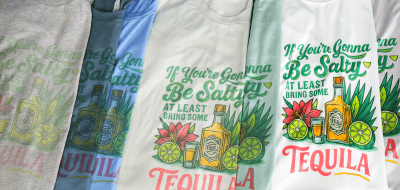
Final Thoughts: Which Shirt is Best
It depends on your goals.
- If you want vibrant, full-color prints, white 100% polyester is your go-to.
- If you're aiming for a softer, vintage look, polyester blends or triblends may be a better fit—even if you sacrifice some color intensity.
- And if you're printing for fashion-forward customers, don’t shy away from color or texture—just design with the garment’s color in mind.
At the end of the day, expanding your sublimation to include more than just white polyester garments will help you stand out, reach more customers, and offer a broader range of looks and styles.

